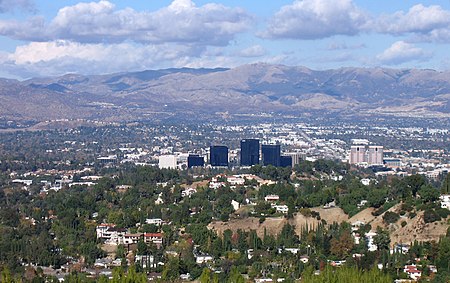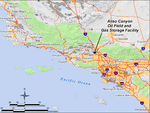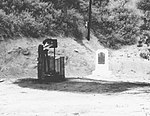Santa Susana Mountains
Chatsworth, Los AngelesGeography of Simi Valley, CaliforniaGeography of the San Fernando ValleyGranada Hills, Los AngelesMoorpark, California ... and 6 more
Mountain ranges of Los Angeles County, CaliforniaMountain ranges of Southern CaliforniaMountain ranges of Ventura County, CaliforniaPorter Ranch, Los AngelesSanta Susana MountainsTransverse Ranges

The Santa Susana Mountains are a transverse range of mountains in Southern California, north of the city of Los Angeles, in the United States. The range runs east-west, separating the San Fernando Valley and Simi Valley on its south from the Santa Clara River Valley to the north and the Santa Clarita Valley to the northeast. The Oxnard Plain is to the west of the Santa Susana Mountains.
Excerpt from the Wikipedia article Santa Susana Mountains (License: CC BY-SA 3.0, Authors, Images).Santa Susana Mountains
Oat Mountain Motorway,
Geographical coordinates (GPS) Address Nearby Places Show on map
Geographical coordinates (GPS)
| Latitude | Longitude |
|---|---|
| N 34.3297 ° | E -118.601 ° |
Address
Oat Mountain Motorway
Oat Mountain Motorway
California, United States
Open on Google Maps





